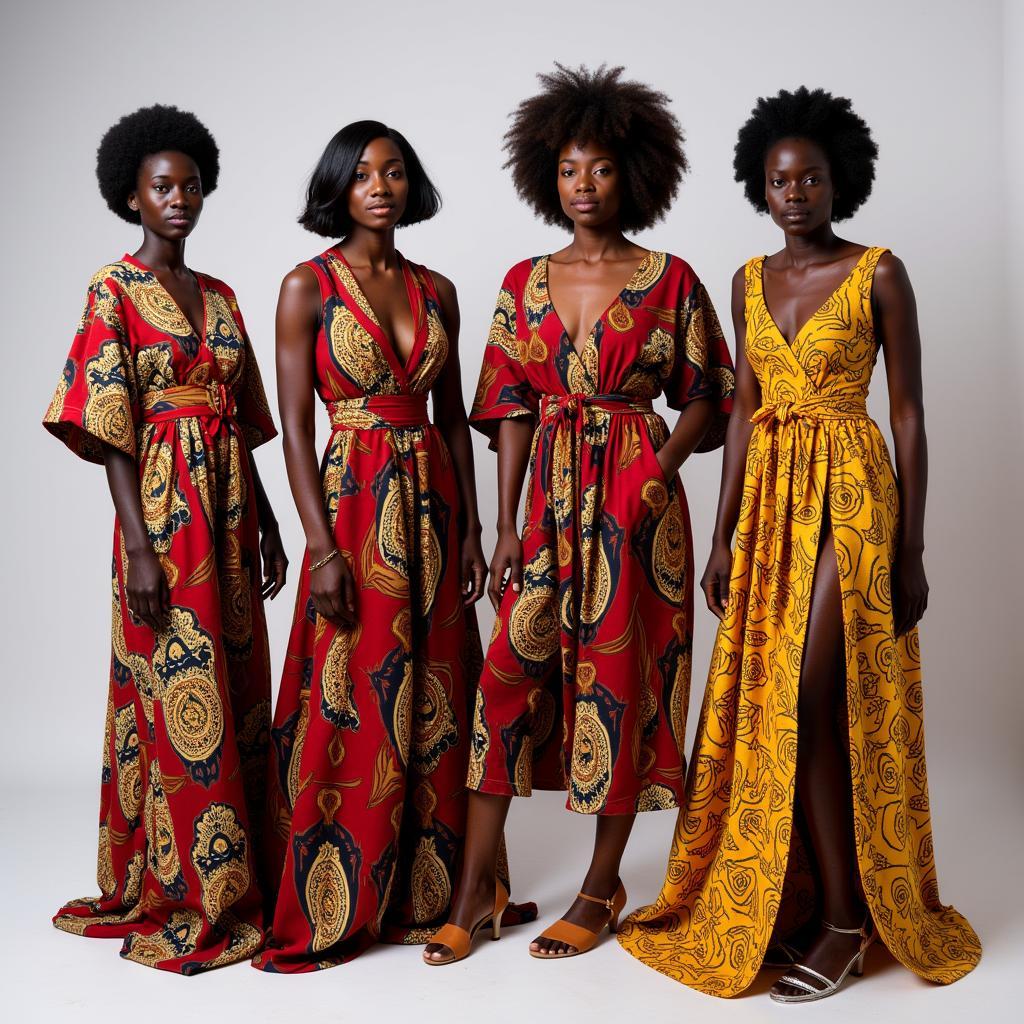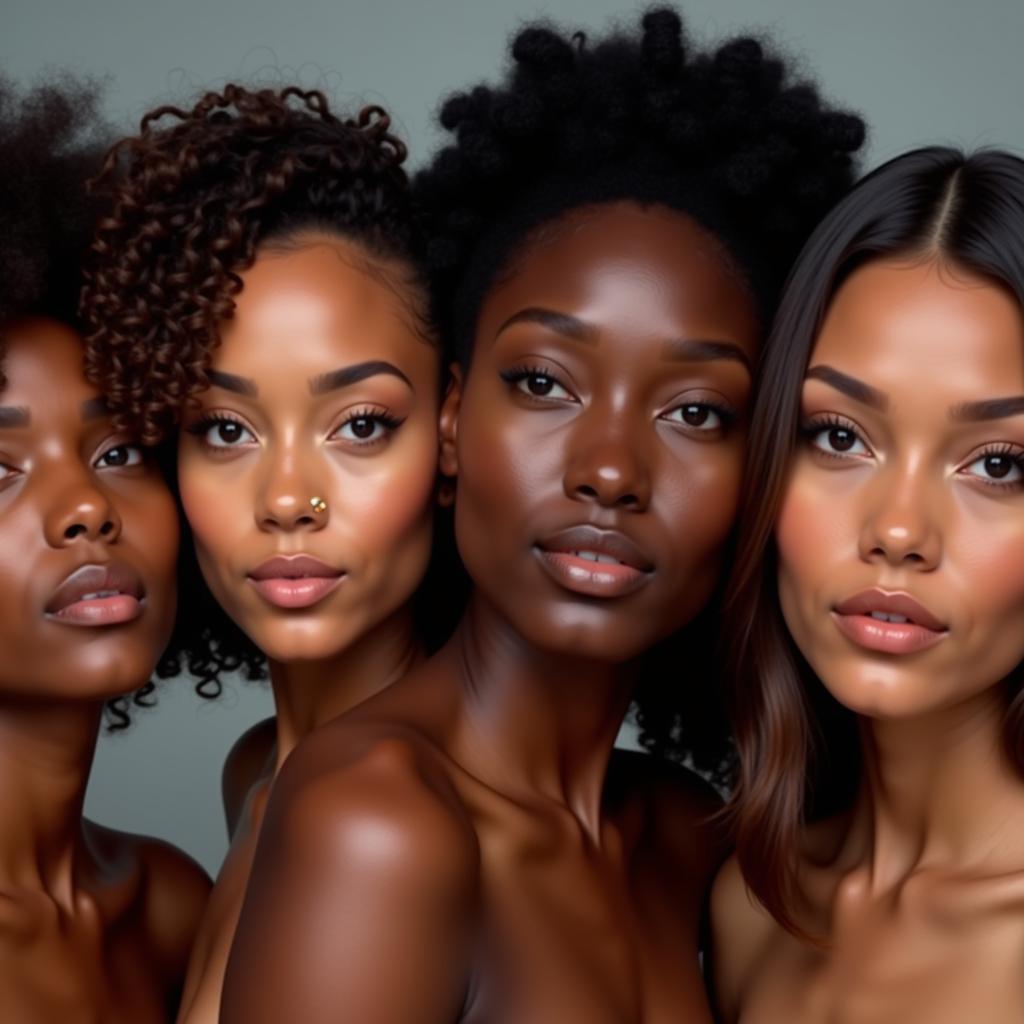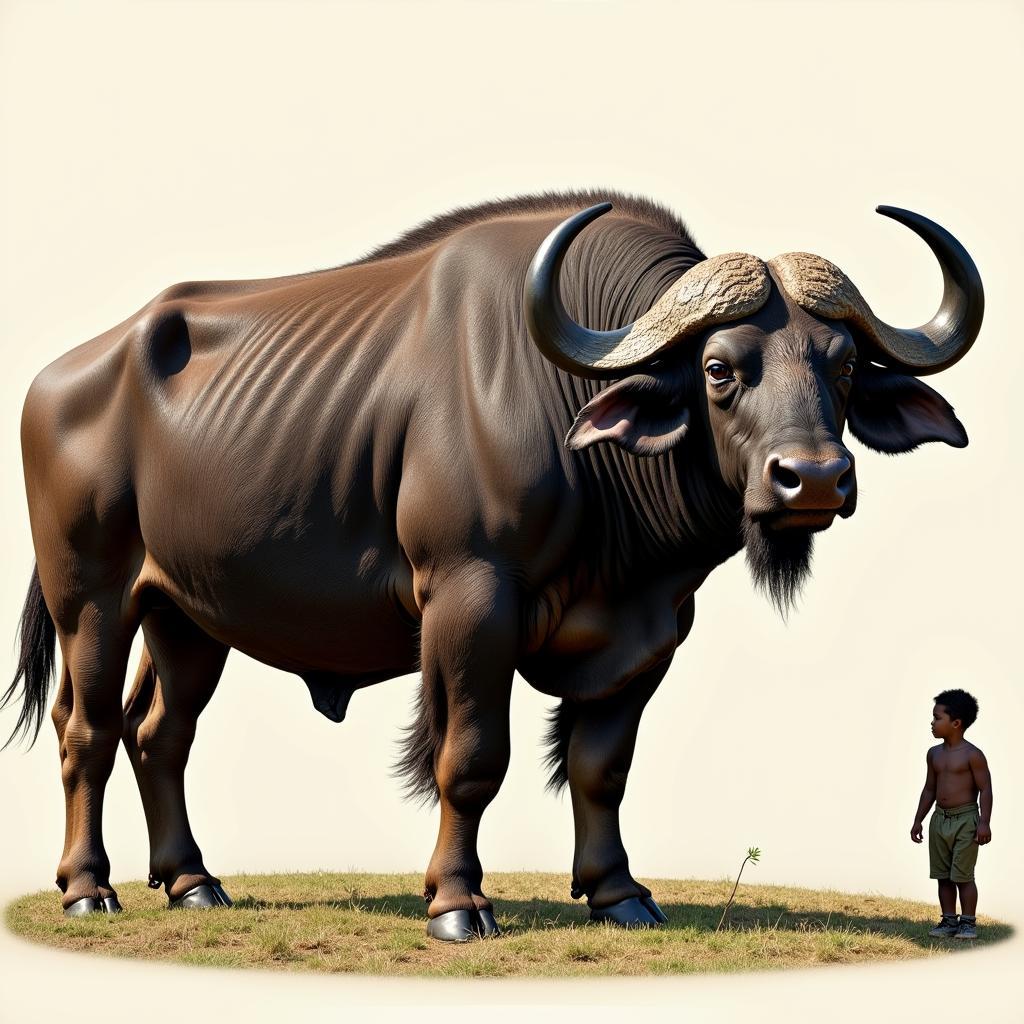African Dress Patterns for Sewing: A Guide to Vibrant Styles and Rich Traditions
African dress patterns offer a captivating blend of vibrant colors, bold prints, and unique silhouettes that have captivated the world. From the intricate embroidery of Moroccan kaftans to the flowing elegance of Nigerian iro and buba, African fabric sewing patterns reflect the continent’s rich cultural heritage and artistic ingenuity. Whether you’re drawn to the geometric patterns of Kente cloth or the animal motifs of Maasai shukas, sewing your own African-inspired garments allows you to embrace these traditions and add a touch of exotic flair to your wardrobe.
Exploring the Diversity of African Dress Patterns
The beauty of African dress patterns lies in their diversity. Each region and ethnic group boasts unique styles, fabrics, and embellishments that tell a story of their history and identity.
West African Dress Patterns
West Africa is renowned for its vibrant and colorful fabrics, often featuring bold geometric designs and intricate embroidery.
- Ankara: This versatile fabric, also known as “African print,” is characterized by its bright colors and intricate patterns created using a wax-resist dyeing technique. Ankara is commonly used to create a wide range of garments, from flowing dresses and skirts to tailored trousers and jackets.
- Kente: Originating from Ghana, Kente cloth is a handwoven fabric made from silk or cotton threads. It features intricate geometric patterns and bright colors, each design carrying symbolic meaning. Kente is often worn for special occasions and ceremonies.
 West African Dress Patterns
West African Dress Patterns
East African Dress Patterns
East African dress patterns often incorporate flowing silhouettes, intricate beadwork, and natural fabrics like cotton and linen.
- Kanga: These rectangular pieces of cloth are a staple in East African fashion, particularly in Tanzania and Kenya. Kangas are known for their vibrant colors, bold borders, and Swahili proverbs printed on them.
- Maasai Shuka: The Maasai people of Kenya and Tanzania are known for their striking red-checkered shukas, which are traditionally worn as wraps. The patterns and colors of the shuka often denote age, status, and clan affiliation.
Southern African Dress Patterns
Southern African dress patterns are influenced by a blend of indigenous traditions and colonial history.
- Shweshwe: This printed cotton fabric, originating from South Africa, is characterized by its distinctive geometric patterns and indigo blue color. Shweshwe is often used to create traditional garments and contemporary fashion pieces.
- Capulana: Similar to the East African Kanga, Capulanas are rectangular pieces of cloth widely worn in Mozambique and other parts of Southern Africa. They often feature bold prints, floral designs, and vibrant colors.
 East and Southern African Dress Patterns
East and Southern African Dress Patterns
Choosing the Right African Dress Pattern for You
With such a diverse array of african george fabric and patterns to choose from, it can be overwhelming to know where to begin. Here are some factors to consider when selecting an African dress pattern:
- Occasion: Are you looking for a pattern for a special occasion like a wedding or a more casual everyday outfit? The formality of the event will influence your fabric and style choices.
- Personal Style: Do you prefer bold and vibrant prints or more subtle and understated designs? Consider your personal aesthetic and choose a pattern that resonates with your style.
- Body Type: Different dress silhouettes flatter different body types. Experiment with various styles to find what suits you best.
Where to Find African Dress Patterns
- Online Fabric Stores: Many online retailers specialize in African fabrics and offer a wide selection of patterns to choose from.
- Local African Fabric Stores: Visiting a local African fabric store allows you to see and feel the fabrics in person before making a purchase.
- African Fabric Distributors: These distributors often work directly with artisans and can provide a wider selection of unique and authentic fabrics.
- African Dress Patterns Free: Many websites and online communities offer free African dress patterns, making it easy to experiment with different styles.
Tips for Sewing with African Fabrics
- Pre-wash your fabric: African fabrics, especially cotton prints, can shrink after washing. Pre-washing your fabric will prevent any surprises later on.
- Use a sharp needle: African fabrics can be densely woven, so using a sharp needle will make sewing easier and prevent skipped stitches.
- Iron with care: Always check the care instructions on your fabric before ironing. Some fabrics may require a lower heat setting to prevent damage.
Sewing with African dress patterns is a rewarding experience that allows you to connect with the continent’s rich cultural heritage and create unique and stylish garments.
FAQs about African Dress Patterns for Sewing:
What is the most popular African fabric for dresses?
Ankara, also known as African print, is arguably the most popular African fabric for dresses due to its versatility, vibrant colors, and wide availability.
Where can I find authentic African fabrics online?
Several online retailers specialize in authentic African fabrics. It’s essential to research and choose reputable sellers to ensure quality and ethical sourcing.
Are African dress patterns suitable for beginners?
Many African dress patterns are beginner-friendly, especially those with simple silhouettes and minimal embellishments.
Can I mix and match different African fabrics in one outfit?
Absolutely! Mixing and matching different African fabrics can create unique and eye-catching outfits.
How do I care for my African print garments?
Handwashing or using a gentle cycle on your washing machine is generally recommended for African print garments. Avoid using harsh detergents and direct sunlight when drying.
Need further assistance with African dress patterns?
Contact us at:
Phone Number: +255768904061
Email: kaka.mag@gmail.com
Address: Mbarali DC Mawindi, Kangaga, Tanzania
We have a dedicated customer support team available 24/7.
Explore more about African fashion and culture in our other informative articles available on the website.



